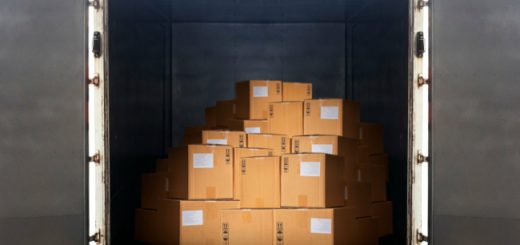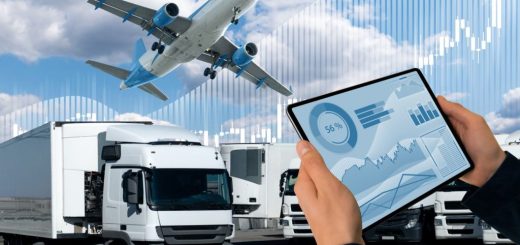Cheapest Shipping from China to the U.S.: Consolidation vs. Direct Options Compared (2025 Guide)
Introduction
As global shipping rates and tariffs evolve in 2025, especially from China to the U.S., importers face growing pressure to cut logistics costs. For multi-supplier or mid-size shipments, consolidated freight (LCL or shared FCL) can offer major savings over direct shipping modes like express courier or dedicated air freight. This comprehensive guide breaks down the cost, transit time, risk, and best-use scenarios for each shipping option—helping you choose the most economical route.
1. Understanding “Direct” vs. “Consolidated” Shipping
- Direct shipping refers to parcels or dedicated air freight sent straight to your destination—fast, but expensive.
- Consolidated shipping groups multiple small shipments into one LCL container, shared FCL container, or air pallet, significantly reducing per-unit rates. Consolidators handle pickup, consolidation, customs, and final delivery.🇺🇸
([turn0search1]turn0search14]turn0search3])
2. Pricing Benchmarks: Express, Air, LCL & FCL
According to 2025 rate data:
- Express courier (DHL, FedEx, UPS): ~$5/kg for small parcels under ~150 kg—convenient, but pricey. ([turn0search0]turn0search4])
- Standard air freight: ~$3–7/kg for 150–500 kg shipments; cheaper than express but still costly at scale. ([turn0search6]turn0search0])
- LCL ocean freight:
$100–300/CBM ($1–2/kg or more depending on density), with transit times of ~25–35 days. - FCL ocean freight: $2,000–5,500 per container (20ft–40ft) (~$80–250/CBM for complete container), slow but cost-efficient. ([turn0search11]turn0search16]turn0search7])
For European/North American importers using China consolidation services, LCL offers flexibility and low cost for moderate volumes, while FCL is ideal above ~15 CBM or when splitting space with others. ([turn0search2]turn0search15])
3. Cost & Speed Comparison
| Shipping Option | Cost Example | Transit Time | Best For |
|---|---|---|---|
| Express Courier | ~$5/kg (up to 150 kg) | 2–5 days | Samples, urgent small shipments |
| Standard Air Freight | $3–7/kg (150–500 kg) | 7–10 days | Medium-weight urgent shipments |
| LCL Ocean Freight | $100–300/CBM | ~25–35 days (West Coast) | Flexible, moderate-volume imports |
| Shared or Full FCL Ocean | $2,000–5,500/container | ~25–40 days | Large volume, lowest per-unit cost |
([turn0search0]turn0search6]turn0search11]turn0search7])
4. When Consolidation Beats Direct Shipping
✅ Lower Unit Cost at Scale
Consolidation leverages bulk ocean rates. A 10 CBM LCL shipment may cost ~$1,200–1,800 for freight + handling—far cheaper than shipping separately via air. ([turn0search2]turn0search15])
✅ Simplified Customs & Lower Entry Fees
Consolidating shipments avoids multiple customs entries (post low-value tariff changes), instead using one formal ocean shipment. This saves duty events and broker fees. ([turn0news20]turn0search3])
✅ Steadier Rates & Predictability
Ocean LCL/FCL rates are more stable than volatile air spots congested by demand surges from platforms like Temu and Shein. ([turn0news22]turn0search6])
5. Situations Where Direct Shipping May Still Work
- Urgency: Samples or urgent replenishment under 50 kg may justify express costs.
- Low volume: Under ~150 kg, direct air often costs less than sea logistics complexity.
- High-value goods needing minimal handling and speed.
- Complex packaging or special handling needs unavailable in consolidation hubs.
6. 2025 Market Volatility & Tariffs
- As of May 2025, container freight from China to U.S. West Coast surged to ~$6,500 vs previous $3,500; East Coast hit $7,500–8,500 per container due to tariff shifts. Smaller importers felt the pinch most. ([turn0news20])
- Air freight demand surged ~49% from Chinese factories, pushing up spot prices to ~$5.27/kg—a 40% increase year-over-year. Consolidation helps avoid such peaks. ([turn0news21])
7. Consolidation Strategy & Cost-Saving Tips
📦 Match Volume with Mode
- <150 kg: express or consolidated air
- 150–500 kg: consolidated air freight
- 500 kg–15 CBM: LCL ocean
- 15 CBM: FCL (shared or full)
📦 Optimize Packaging
Use tight cartons, reduce void space, palletize goods for LCL or FCL—smaller CBM means lower charges. ([turn0search11]turn0search3])
📦 Book Early, Avoid Surcharges
Peak season GRIs skyrocketed rates mid‑2025. Book ahead to avoid unexpected add‑fees. ([turn0news20]turn0search7])
📦 Audit Freight Invoices
Post-shipment audits often uncover hidden surcharges—recover 5–8% of total cost. ([turn0search11]turn0search6])
📦 Use Trusted Forwarders
Look for agents managing consolidation, customs, tracking, insurance, and DDP delivery options in both China and U.S. ([turn0search23])
8. Real-World Examples
- Example A: 8 CBM from multiple Chinese suppliers → LCL cost ~$800 total.
- Example B: Share a 20ft FCL (12 CBM) with other sellers → cost ~$1,600 versus LCL ~$1,200 but cleaner delivery.
- Example C: Direct express for urgent 50 kg order costs ~$300; test cost-benefit of air consolidation at ~$180.
9. Risks & Trade-offs
- Transit time: Ocean shipping takes weeks vs. few days by air.
- Delayed consolidation: Slow supplier arrivals incur warehouse fees or delayed shipments.
- Potential handling damage: LCL packages share space—proper repacking matters.
- Customs complexity: Direct ship parcels often require separate customs entries under new rules.
10. Sustainability & Strategic Edge
Consolidated shipping supports sustainability by maximizing container usage and reducing carbon emissions per item. It also gives SMEs leverage similar to large-scale importers without requiring volume. ([turn0search2]turn0search15]turn0search3])
Conclusion
In 2025, for European and North American importers working with China, consolidated freight (LCL, FCL, air consolidation) offers the cheapest way to ship moderate to large volumes. Direct shipping methods still have a place for speed or small groups, but for ongoing supply chains, consolidation delivers predictable pricing and cost-efficiency—especially with volatile shipping rates and evolving tariffs. Choosing the right method—and a reliable forwarder—will determine whether you win or lose margin in today’s trade environment.


